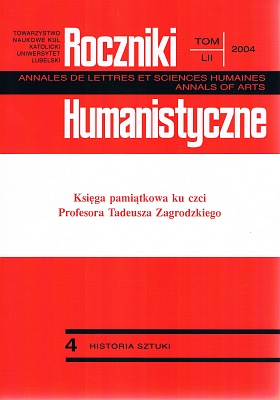Illuminations in the Code of Gracian’s Decree from the collection of the University Library of the Catholic University of Lublin
Abstract
The article is the first attempt at making a stylistic-comparative analysis of the manuscript of Concordia Disscordantium Canonum, the work that is commonly known as Gracian's Decree, and is part of the collection of the University Library of the CUL (catalogue number: Ms. 1). The manuscript was acquired by the Library as a gift from Count Jerzy Moszyński in 1926. In Polish collections there are only six copies of Gracian's Decree. The copy owned by the Lublin library is the most impressive one. It is decorated with thirty-eight figurative miniatures and drawings on the margins.
Gracian's Decree from the UL CUL collection was made in Paris or in Toulouse in a style that is described as “Parisian” by Robert Brenner, although the style was changed a little by the features of the local workshop – one of the south of France. Its author was an anonymous illuminator whom the author of the article calls Master of the Lublin Decree; and two of the miniatures were painted by his helper, Master B. Individual features of the Master of the Lublin Decree's style allow linking him to the circle that was under the influence of workshops that were followers of the ateliers where the following codes were painted: the Copenhagen Corpus Iuris (Kogelige Bibliothek S. 393), and The Book of Psalms called Wenceslaus (Ex-Dyson Perrins 32). The circle in which the authors of the Lublin Decree remained should also be linked with the influence of Louis the Saint's Book of Psalms and the Gospel Books from St Chapelle (Paris, BnF lat. 17326 and BnF lat. 8892), and particularly with Gracian's Decree from BnF (ms. lat. 3898). The Master of the Lublin Decree painted ms. 1 from the UL CUL at the break of the 13th century, and then, being under a much stronger influence of Bologna he painted the miniatures in the manuscripts of Gracian's Decree (BM Amiens ms. 355) and Justinian Code (ÕNB, Vienna, ms. 2251). In the manuscript of Amiens he repeated the composition solutions of the manuscript of the UL CUL, modifying them a little; he also used them in the Vienna manuscript. Hence probably the master specialized in law manuscripts.
Copyright (c) 2004 Roczniki Humanistyczne

This work is licensed under a Creative Commons Attribution-NonCommercial-NoDerivatives 4.0 International License.





